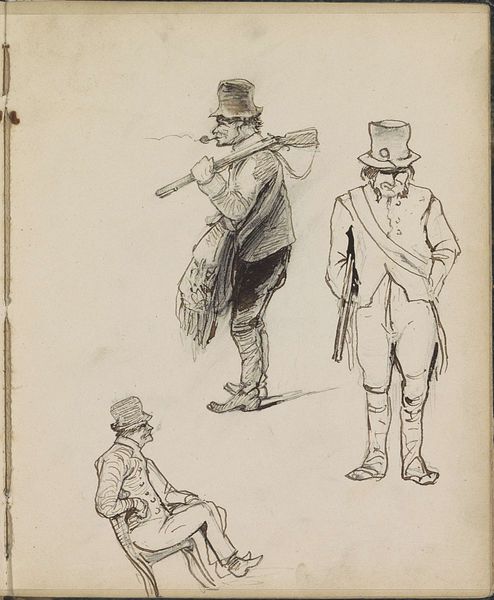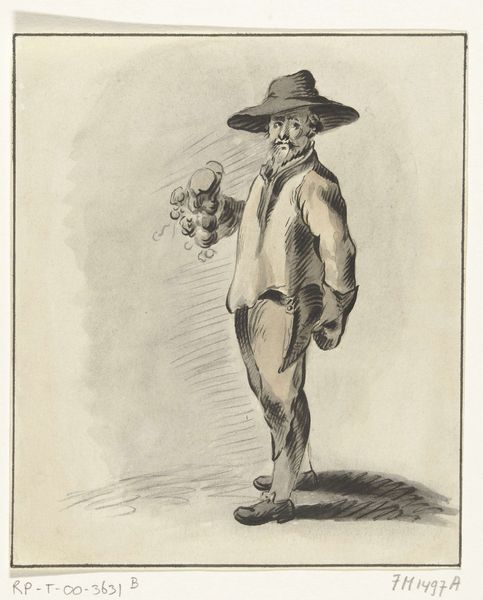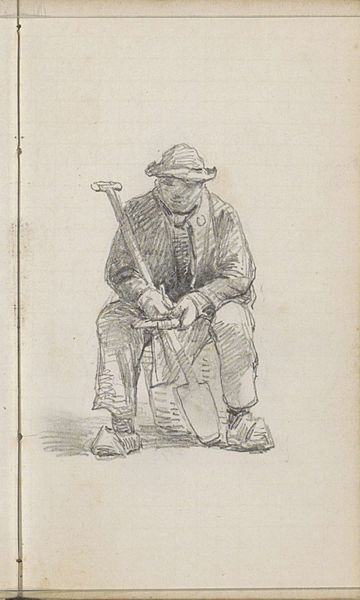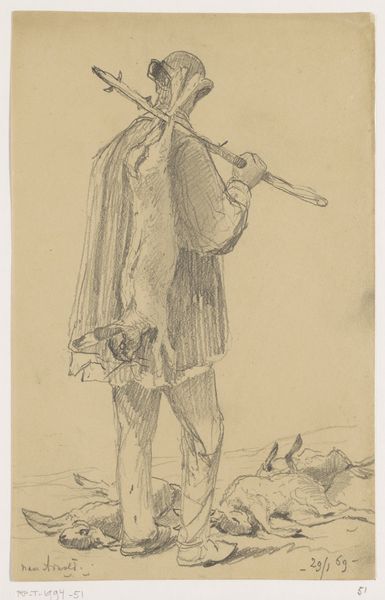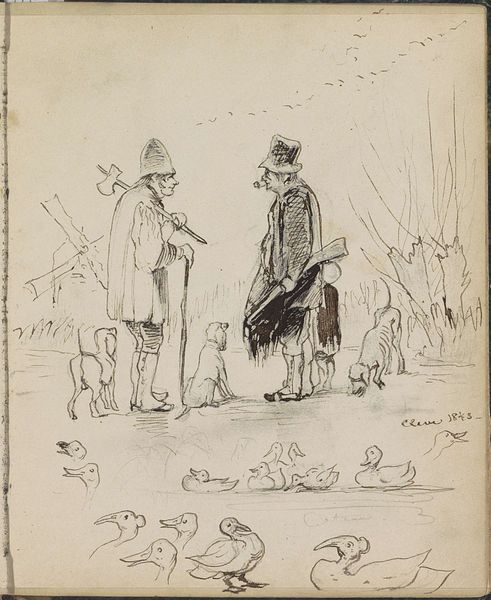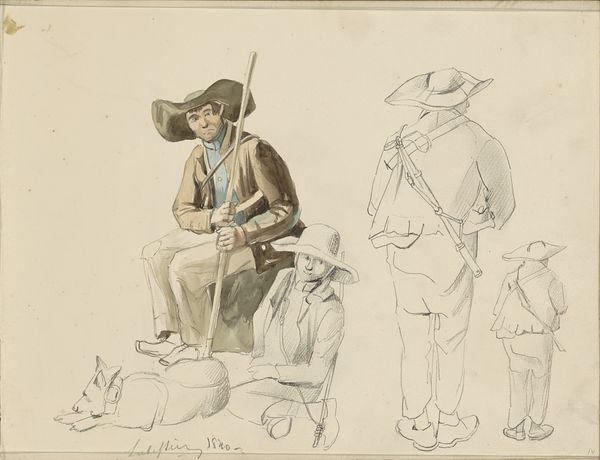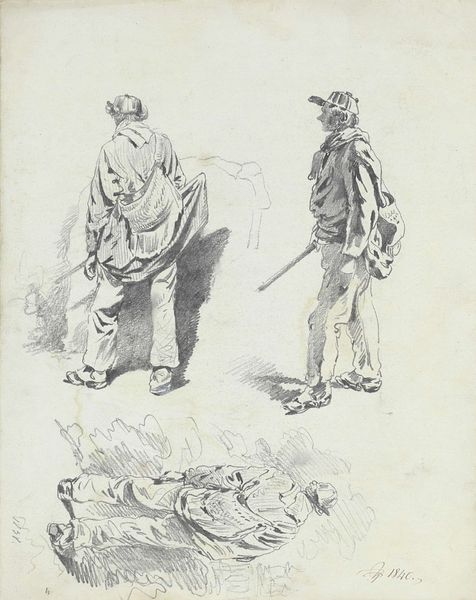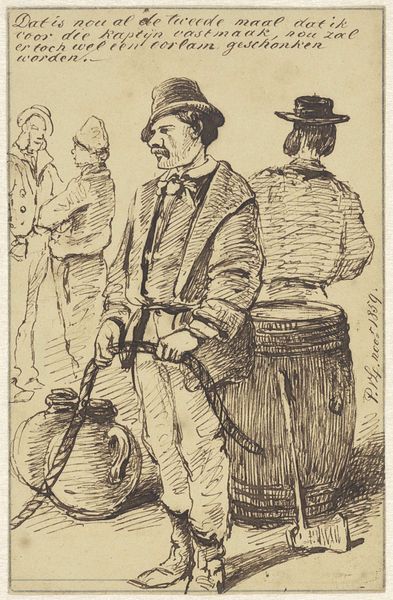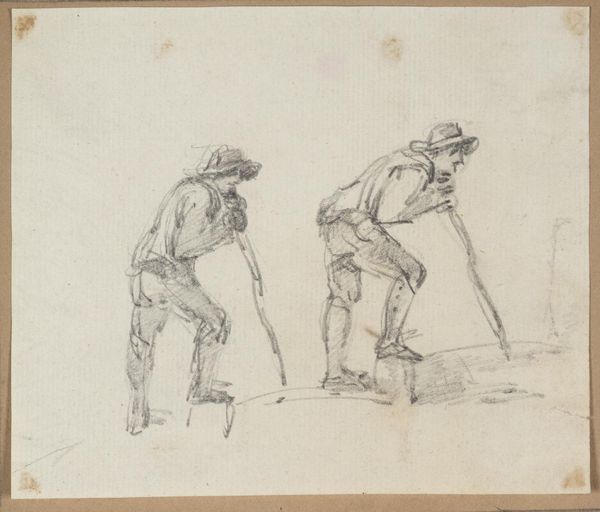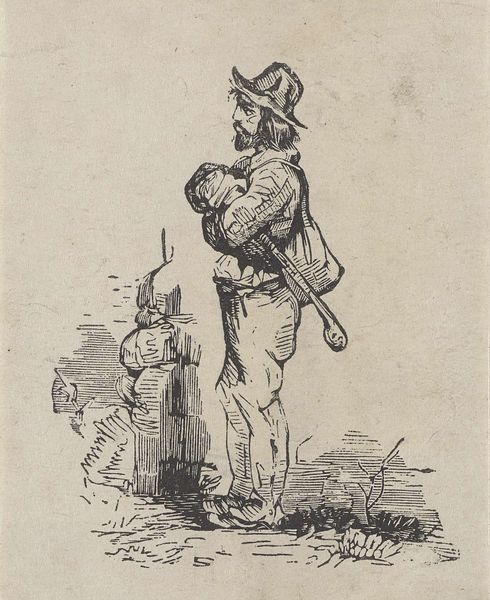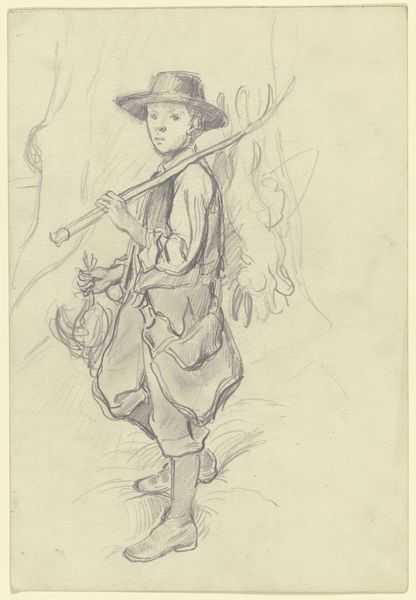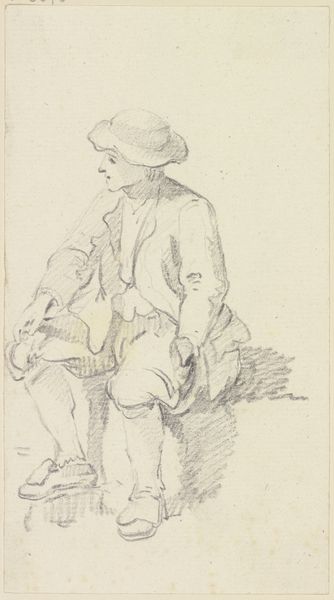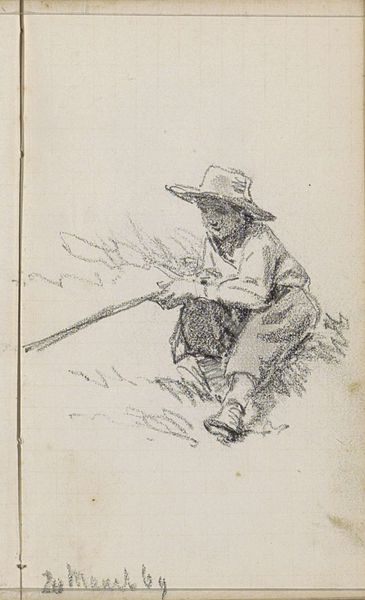
drawing, ink, pencil, pen
#
portrait
#
drawing
#
toned paper
#
light pencil work
#
quirky sketch
#
pen sketch
#
pencil sketch
#
dog
#
landscape
#
personal sketchbook
#
ink
#
ink drawing experimentation
#
pen-ink sketch
#
pencil
#
sketchbook drawing
#
pen
#
genre-painting
#
sketchbook art
Copyright: Rijks Museum: Open Domain
Curator: Let's dive into this drawing by Johannes Tavenraat, "Hunter with a Pipe, Leaning on his Rifle," created sometime between 1841 and 1853. It's a lively sketch, all in pen, ink, and pencil on toned paper, found in the Rijksmuseum. What strikes you first? Editor: The composition feels very casual, like a peek into the artist's sketchbook. The hunter and his dogs appear alongside multiple studies of the same man’s head. It makes me wonder about Tavenraat's process. How does the medium influence the message here? Curator: Exactly. We have to think about the materials first. Tavenraat opted for readily available, relatively inexpensive materials – pen, ink, pencil, and toned paper. This accessibility implies a work produced outside the formal studio, meant to capture a fleeting moment. What kind of labor is he engaging in here? Is this work, or is this leisure? Editor: I see what you mean. It is a sketch, but is it *just* a sketch? Could it have been a study for a more ‘finished’ work that no longer exists? Or, perhaps the sketchbook *is* the finished work? Curator: That tension is key! The ‘preparatory’ nature allows us to examine the means of production very closely. We see the artist grappling with form and figure through repeated studies. Does that repetitive act challenge our conventional ideas of art as singular ‘genius’? And what social class did Tavenraat's access to these materials indicate, compared to the hunter? Editor: It’s interesting to consider how the hunter becomes both the subject and the object of artistic labor, mediated by readily available and mass-produced art supplies of the time. That makes me reconsider my understanding of 19th-century genre paintings. Curator: Indeed! This sketchbook drawing opens a window into the very process and materiality of art-making. Considering that illuminates larger questions about skill, labor, and the artist's position within his social context.
Comments
No comments
Be the first to comment and join the conversation on the ultimate creative platform.
